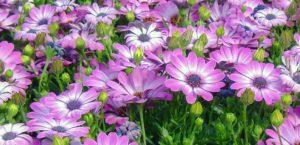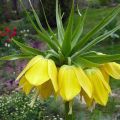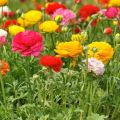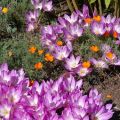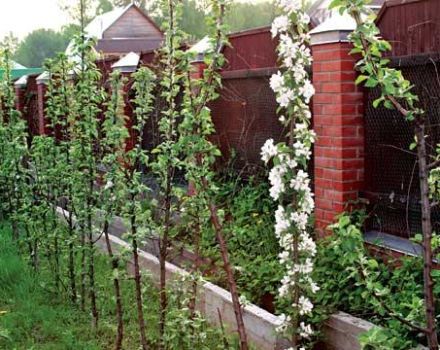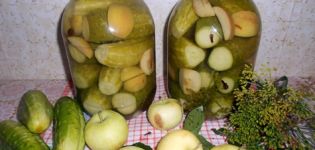Planting and caring for Ixia in the open field, especially growing
Gardeners want to create the most comfortable and beautiful environment on their own backyard. To do this, they use a variety of varieties and types of plants, originally planting them and turning a nondescript flower bed into a real work of art. Plants familiar to this area are already tired, since they are found in almost every area, so you should give preference to unusual new flowers. Ixia is a great alternative for those who seek originality, learning the correct planting and care of the crop can achieve excellent results.
Ixia - botanical description of a garden plant
Ixia is a herbaceous perennial that belongs to the Iris family. The name of the plant in translation from Greek means "glue", and all because the culture produces sticky juice. Previously, it was used to catch birds, and the flower itself needs it to attract insects that carry pollen. The natural growing environment is the south of the African continent, but now you can find a large number of hybrids, cultivated in many regions since the 19th century.
This bulbous plant can reach a height of 15 to 70 cm, depending on the variety. The stems are long and thin enough, narrow leaves are shaped like swords. Ixia itself looks very elegant and sophisticated. The diameter of the strongly open flowers ranges from 2.5 to 5 cm, each of them consists of 6 large petals of various bright shades, ranging from white to red.
The color becomes more saturated closer to the core. One inflorescence contains about 10 flowers. Ixia begins to delight with its flowering and subtle unobtrusive smell in late spring or early June, it lasts from 20 to 30 days. At night and in bad cloudy weather, the buds close.
Benefits of using in landscaping
Exotic ixia are considered the most interesting and in demand for landscape design.In the garden of Ixia, it is recommended to plant in one group in a rock garden, rocky rockery or flowerpots. Look great in a flowerbed near the border in the foreground. Ixia is used to create lawns, creating an atmosphere of natural, natural charm. Can be grown in greenhouses for cutting and arranging bouquets.
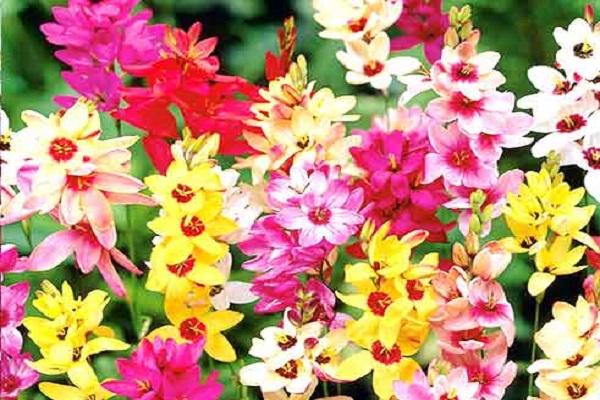
Ixia is a good partner for group plantings. The combination of bright contrasting colors, for example, yellow and purple, looks advantageous. To create attractive compositions, lupine, delphinium are suitable as neighbors for ixia. A combination of vegetation that does not bloom, but has the same height as Ixia, also looks good. In addition to its visual appeal, it will help the slender stem of exotic Ixia to survive adverse weather.
Varieties and varieties
In nature, there are more than 20 species of ixia and countless bred varieties and a wide variety of hybrids.
The most popular varieties include these.
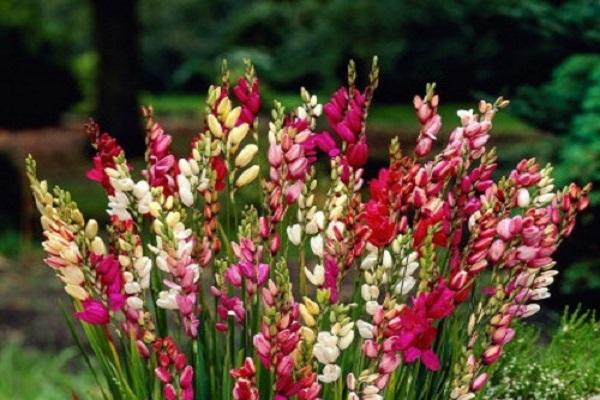
Monadelpha Ixia monadelpha
Ixia of this species is distinguished by the presence of stellate flowers, often of a lilac or blue hue, collected in dense spike-shaped inflorescences. The stem is thin and branched, less often simple, in height it can reach 15 to 40 cm. Leaves can reach 28 cm, lanceolate or spiral in shape.
Longituba Ixia longituba
Ixia has an unusual flower structure, the petals are located on a long tube, thanks to this feature, the variety has such a name. The colors of the petals are very diverse. Varieties can also be miniature or tall.
Spotted Ixia maculata
Ixia flowers of various shades 40 mm in diameter with a dark core are collected in spike-shaped inflorescences. The height of the stem is no more than 40 cm, and the rounded bulb is about 30 mm in diameter. The leaves in the root zone are collected in a rosette and have a lanceolate shape.
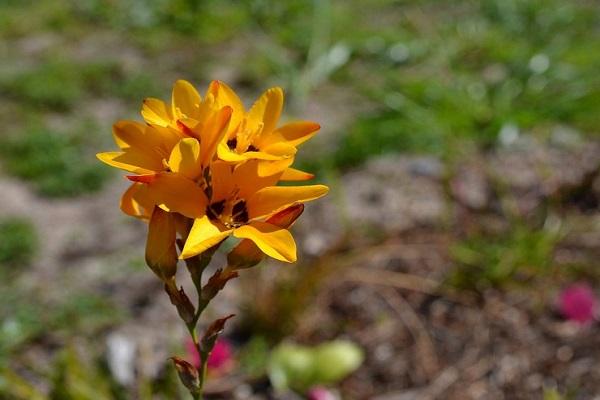
Green-flowered Ixia viridiflora
This type of ixia is very rare and it is quite difficult to find planting material. Small, small, flat flowers, collected in inflorescences, are green in color, with a dark purple core, thin weak stems and neat leaves.
Cream Ixia Cream
An unusual variety of Ixia, which got its name from the delicate creamy shade of the petals of the bud and the dark purple center. Flowers, collected in massive, dense inflorescences, gradually bloom from the bottom up and may not crumble for a long time. It has a thin stem and narrow leaves.
Pink
The star-shaped bud has a pink tint, which becomes darker towards the end of the petal and towards the beginning of the core, which has the most burgundy color. Ixia buds are collected in spike-shaped inflorescences, located on long thin stems, framed by bright strong leaves.
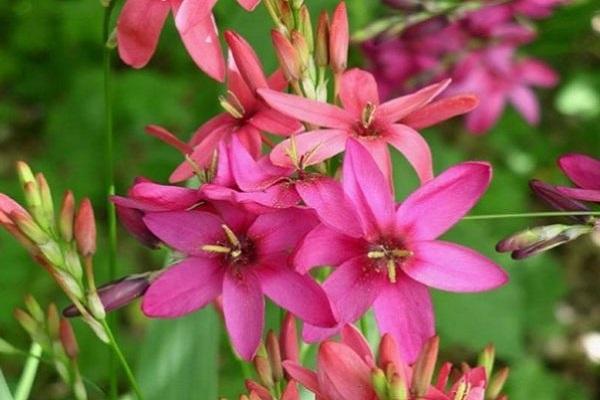
Red Ixia Red
Ixia variety with large inflorescences collected from bright red flowers. The stem is up to 45 cm high, the leaves are lanceolate, dark in color.
Orange
A dwarf variety of Ixia, which reaches a maximum of 20 cm in length. It is characterized by abundant flowering and bright orange petals with a dark center. The peduncle itself is low, the leaves are lanceolate, not attracting attention.
Mix
The lush inflorescences of Ixia consist of buds of a variety of colors. Flowering lasts for 20 days. Ixia reaches a height of more than 50 cm.
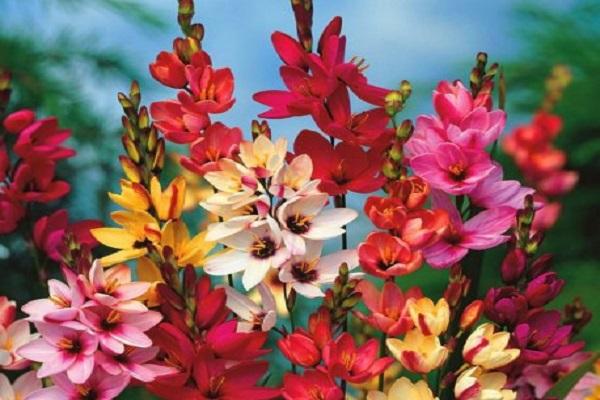
What conditions does the flower require
Growing Ixia portends some difficulties, since it is not adapted to growing in our regions.
Illumination, humidity
It is recommended to choose a site for planting and further growth of Ixia away from tall trees. The culture requires direct sunlight. Stagnant fluid negatively affects the formation of ixia, so you should take care of drainage.
Temperature regime
The planting material will die when the temperature drops to -2 degrees.Ixia tubers will not survive the winter, so they must be dug up and transplanted into a pot for a period of unfavorable conditions, placing it in a warm room.
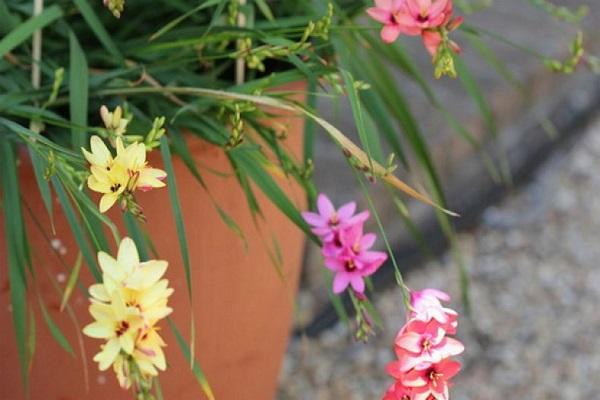
Suitable soil composition
The soil should be fertile with a neutral reaction and a sufficient amount of humus. Ixia will develop normally in a soil mixture containing sand, turf and peat fractions.
Neighborhood with other cultures
Ixia should not be placed next to tall trees with a massive crown and a powerful root system. Can be planted next to annuals such as petunia, salvia, lobelia. The culture with queens and gladioli takes root best of all.
How to plant outdoors
Before you start planting, you need to study a few important rules in advance.
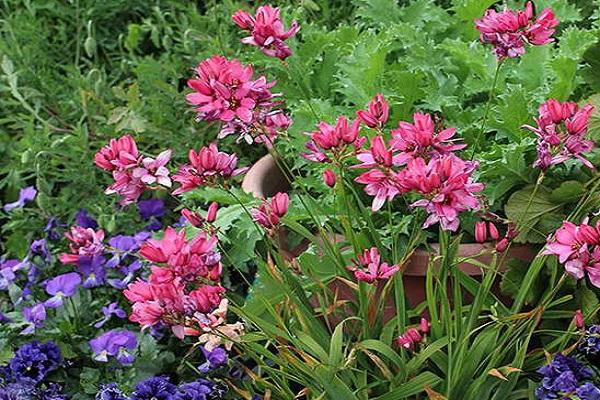
Optimal timing
In the southern regions, bulbs are planted both in spring and autumn. But for an autumn planting, the holes should be 10 cm deeper than usual. In areas with a temperate climate, planting is carried out exclusively in May.
Bulb processing and germination before planting
For long flowering, it is worth choosing a good planting material. The bulbs must be firm and firm, at least 3 years old. Before planting, they are disinfected by soaking in a non-concentrated solution of potassium permanganate for 15-20 minutes, after which they are well washed with clean water. Then the prepared material must be laid for germination, placing the bulbs close to each other in a container with coarse sand or sawdust. Cover with foil on top and send to a warm windowsill. Air every day for 10 minutes, lifting the film.
After 2 weeks, the bulbs will sprout. If the material has not sprouted, then it is not suitable for planting, and it must be thrown away.
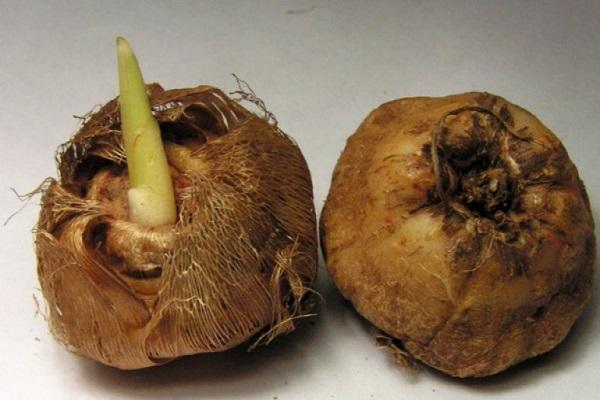
Landing technology
Dig holes 6-8 cm at a distance of about 10 cm if they are children, and 20 cm if adult bulbs. Send tubers into the pits, sprinkle with a small amount of soil and a thin layer of mulch. It is impossible to water, only after 2 weeks moisten the soil, when the first sprouts will already sprout.
How to care
Plant care is simple, but the agricultural technology of this culture has its own characteristics. Important conditions for germination are optimal temperature, high humidity and bright lighting.
Top dressing and watering
Before the formation of the first shoots, Ixia should not be watered. Subsequently, moisten the soil regularly and abundantly, especially at the time of bud formation. To create increased humidity, it is recommended to spray daily in the evening.
After flowering, reduce watering to a minimum.

The culture needs fertilizing with mineral fertilizers, which alternate with organic substances. Special fertilizers made for this exotic plant can be purchased at a flower shop.
Pruning
Ixia care provides for the correct pruning of faded inflorescences, so that new buds have time to form.
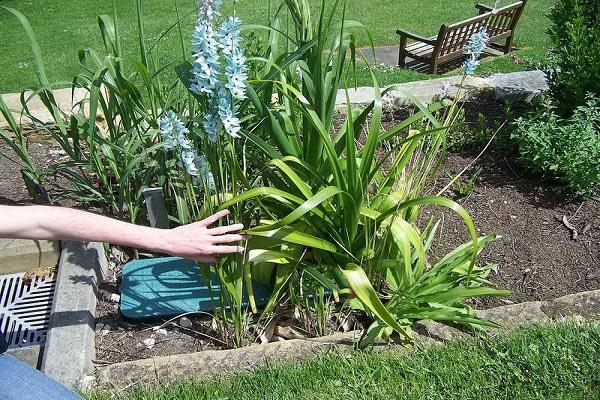
Diseases and pests: treatment and preventive treatments
Ixia is a resistant plant and does not have potentially dangerous diseases and pests that can be affected, since the culture has an enviable immunity. Health problems can appear solely from wet ground. If the root system is in a state of chronic waterlogging, stagnation of moisture provokes rotting of the roots. Prevention is adherence to the watering schedule.
How to store ixia bulbs until spring
Storing bulbs in winter has its own characteristics, which are worth paying attention to.
When to dig
After flowering at the end of July, carefully remove the bulb from the soil.
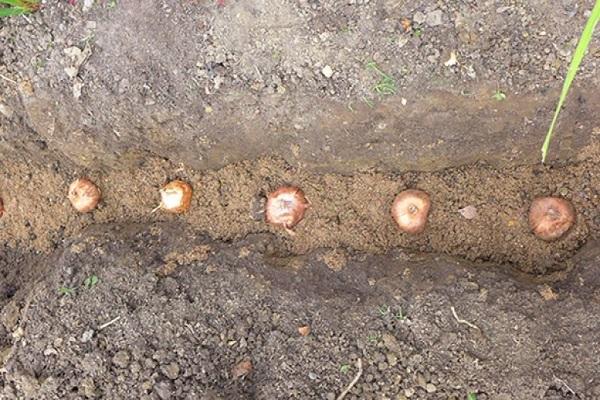
How to dig and store
Dry the excavated material in a well-ventilated place, soak it in an antibacterial solution of potassium permanganate and send it back to drying.Next, put the bulbs prepared for wintering in a dry box, which should be placed in a dry, cool place.
If you want to enjoy flowering and in winter, plant the bulbs in indoor pots and put them on the windowsill.
Subsequent landing in the ground
The next landing depends on the climate conditions and is no different from the aforementioned landing dates.

Reproduction
Reproduction of Ixia is carried out in several ways: by children and by dividing the corms.
Children
Small outgrowths are formed around the maternal corms, which are called babies. Carefully separate them, and cover the attachment points with coal powder and send them to the holes. Flowering occurs in the second or third year.
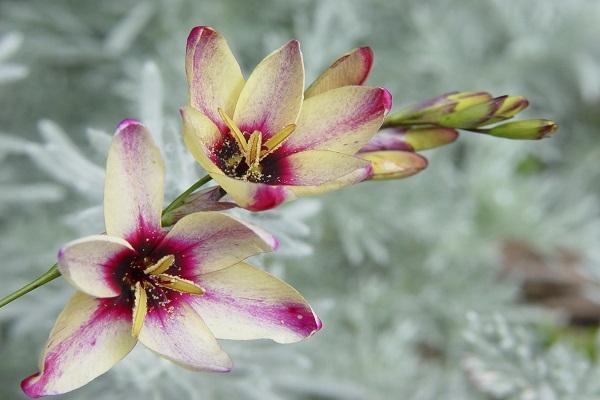
By dividing the bulb
It is considered the most optimal breeding option. To do this, cut one onion into pieces, but only so that each of them has buds, well, or at least one, as well as root rudiments. Sprinkle the planting material using wood ash at the cut, and plant it in the soil. A properly divided bulb will form and bloom this year.
Exotic and unusual Ixia can be easily grown in your own garden, even though the culture is not adapted to grow in our region. Subject to all the conditions of planting and care, you can achieve the desired result, decorate the garden area and simply cheer up.
